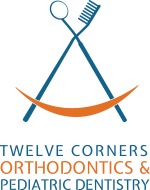Nitrous Oxide Sedation
One of the most common ways to ease a child’s anxiety and to relax them for their dental treatment is from Nitrous Oxide Sedation. This is commonly referred to as pediatric laughing gas and is the most popular sedation method in dentistry. It is recommended for children who need small amounts of dental treatment.
Nitrous oxide/oxygen is a blend of two gases, oxygen and nitrous oxide. This sedation method is administered through a small breathing mask which is placed over the child’s nose. This allows your child to relax, but without putting them to sleep.The American Academy of Pediatric Dentistry identifies this sedation method as a very safe and effective technique to use for treating children’s dental needs.
The gas administered is mild, and this sedation is easily taken and non-addictive. The gas is also quickly eliminated from the body with normal breathing. While inhaling the pediatric laughing gas, your child will remain fully conscious and keep all natural reflexes.
Below are a few side effects your child may feel when receiving the nitrous oxide sedation:
- A warm euphoric feeling
- Lightheadedness
- Floating or tingling in the limbs
- Possible sleepiness
- A Giggling and “funny” feeling
If your child feels discomfort or has an adverse reaction from the nitrous oxide sedation, it can easily be reversed. The percentage of nitrous oxide being administered can also be adjusted during the procedure.
You will see that your child will have no lasting side effects when taking this sedation method. After the procedure, you child can resume day-to-day activities as normal.
IV Sedation
In certain circumstances we may recommend IV sedation. IV sedation has many benefits to patients that have dental anxiety. The doctor has control to put the patient in a moderate or deep sleep depending on what the patient needs.
Benefits to IV Sedation:
- Reduces treatment time
- The patient is usually awake and can even respond to physical touch and verbal cues, but won’t remember the procedure.
- Patient is kept relaxed and calm allowing the doctors to perform the dental surgery easily
- Fast recovery
- Safer option compared to other forms of dental anesthesia





